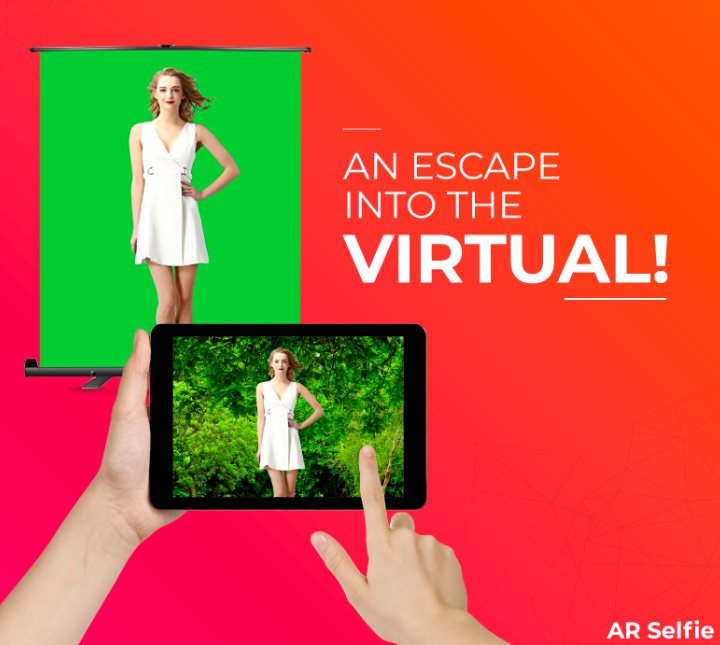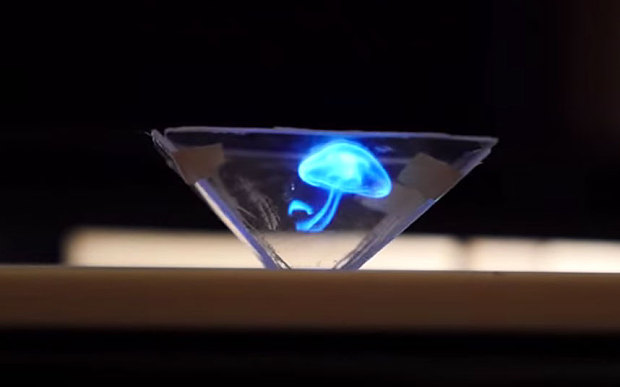Traditional marketing is focused on demonstrating the value of a product or brand to customers, either directly or indirectly. However, in today’s age, modern audiences are not as influenced by traditional marketing as they used to be.
Experiential marketing is a marketing paradigm which is focused on creating experiences for the customer which immerses them in a product or brand. The idea is to engage as many human senses of the customer to create a memorable experience with the objective of creating brand loyalty and influencing their purchasing decisions more effectively using applications like an augmented reality photo booth or a virtual reality booth.
According to studies, 84% of millennials do not trust traditional marketing and less than 1% claim to be influenced by ads. The new generation values experience over everything else and it is not surprising that experiential technology solutions for marketing are more effective than traditional marketing for millennials and Gen Z, who are in the prime working years of their lives and are extremely valuable to marketers across all industries.
In this blog, we’re going to take a look at 3 major technology trends in experiential marketing, which have come to define the way we look at marketing today and for the future.
Technology Trends In Experiential Marketing
Augmented Reality / Virtual Reality
Since the objective of experiential marketing is engaging with the customer’s senses, augmented reality or virtual reality is a perfect match for experiential marketing. It is not uncommon to see the applications of an augmented reality photo booth or a virtual reality booth at brand activations to follow the paradigm of experiential marketing.

It is a common trend for modern photo booths to be based around the idea of augmented reality and virtual reality to create a more immersive experience for the customers. Mixed reality at events is becoming extremely popular with modern audiences, mainly when applied to photo and gif booths.
Virtual reality, when used correctly, can fully immerse customers in the experience of the brand or product as it creates an entire reality which is based around the brand or product for the customers to interact with. Photo and gif booths are increasingly using virtual reality and augmented reality these days.
Augmented Reality is similar to virtual reality in the sense that they both create new realities for customers to interact with. The difference between the two technologies is that virtual reality creates a completely different reality while augmented reality enhances the customer’s reality with augmented features by overlaying additional information and visual stimulus over real-life objects serving as a bridge between the real world and the digital world in a smooth seamless manner.
Brands are focusing more and more on creating immersive experiences for customers using augmented reality and virtual reality in creative ways to utilize the power of experiential marketing.
Modern Photo Booth
The rapid growth of experiential marketing solutions can be linked to the supplementary development of technology, which has enabled new avenues for experiential marketing via digital means. The photo booth is a classic example of this phenomenon and photo booths for event activations have become an experiential marketing trend.
The features of any modern photo booth these days make traditional photo booths look like they are from an antique era. Modern photo booths for events are packed with features that use augmented reality to create mixed reality at events, leading to an increased engagement rate for people attending brand activations or events. Here is your guide to a successful brand activation strategy.

Brands prefer using modern photo booths at brand activations due to various reasons:
- It allows them to create a completely customized experience for the customer. Since everything can be customized, it makes experiential marketing easier and more effective.
- The social media experience can also fully customized in modern photo booths which gives you more control over the user experience and allows you to create user-generated content that is in line with your brand’s identity and values.
- Branding is more effective in modern photo booths as every aspect of the booth can be controlled and branded exactly as per the brand’s specifications. This further aids experiential marketing as it gives brands yet another way to control the customer’s experience of the brand and its journey.
Holographic Technology
As mentioned earlier in this blog, traditional forms of marketing are on the decline as audiences are growing distrustful of advertising in general. The goal of experiential marketing is to create experiences that are immersive and impactful. Holographic technology (used in applications like 3D hologram fan) are increasingly being used by brands to stand out from the competition in the race to win over customers with their brand experiences.

3D holographic displays using 3D holographic fans can be used in brand and event activations to create that X-factor that may win over the customer who attend the activations. There are limitless possibilities when it comes to using 3D holographic fans in experiential marketing like:
- Projecting an impactful video in the brand’s logo, incubating the brand in an emotional and sensory experience for the customer.
- Demonstrating the brand or product in a uniquely creative way which has a long-lasting impact on the customer. For example, the product can be demonstrated in a 360 degree 3D space within a smaller space that would traditionally not allow the product demonstration to take place.
- Adding additional 3D elements to an event to boost the visual impact and capture the sense of sight in a remarkable way. For example, DIESEL used 3D effects on a ramp walk to create a virtual underwater world around real-life models as they walked on the ramp, leading to a more powerful visual impact on the audience and creating a fuller experience for them.
The use of 3D technology (like a 3D hologram fan) is not new to experiential marketing but it carries great promise as it is only limited by the creativity of its application.
Conclusion
Experiential marketing is the new wave of marketing that is meant to transcend the traditional methods of marketing that have become ineffective due to various factors, out of which primarily is the fact that the newer generation has lost faith in advertising and seek authentic, honest, and impactful experiences with brands. To know more, read this article – Can experiential marketing build brand trust and advocacy?
It has been proven that the way to reach this new generation is by creating a relationship with the customer that is based on experiences. The future of marketing lies in crafting powerful brand experiences for the customers and cultivating a relationship based on honesty and trust through amazing experiences.
